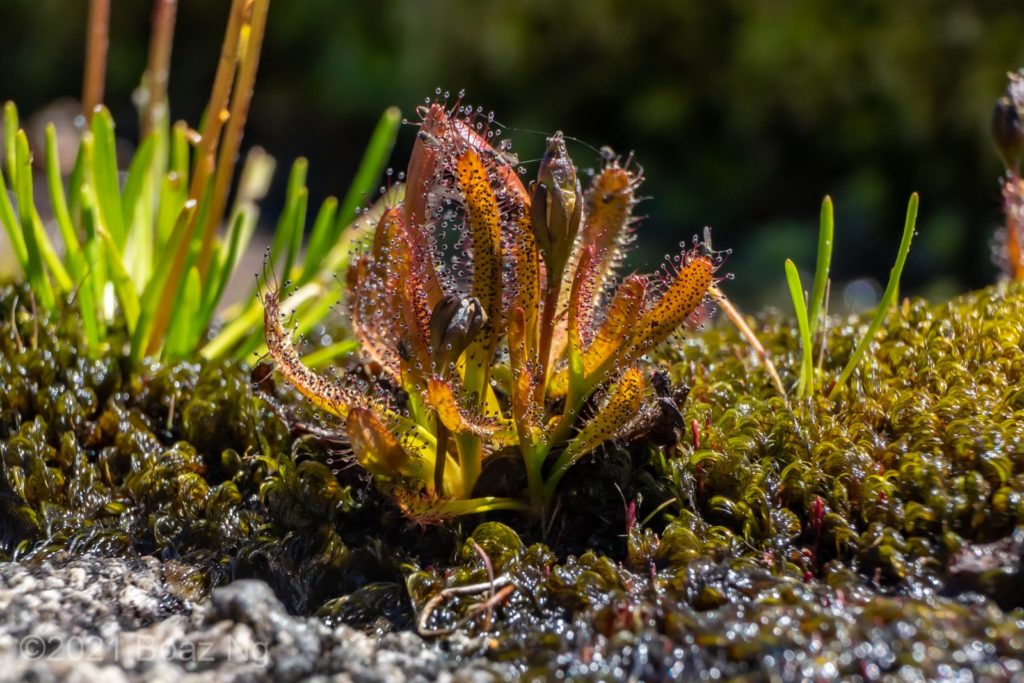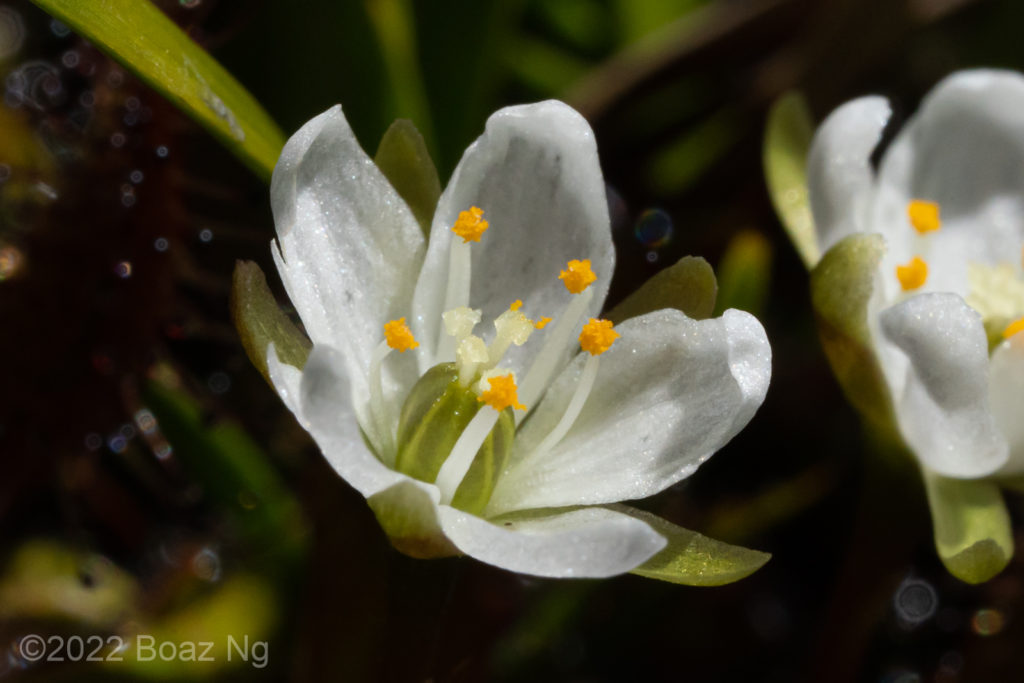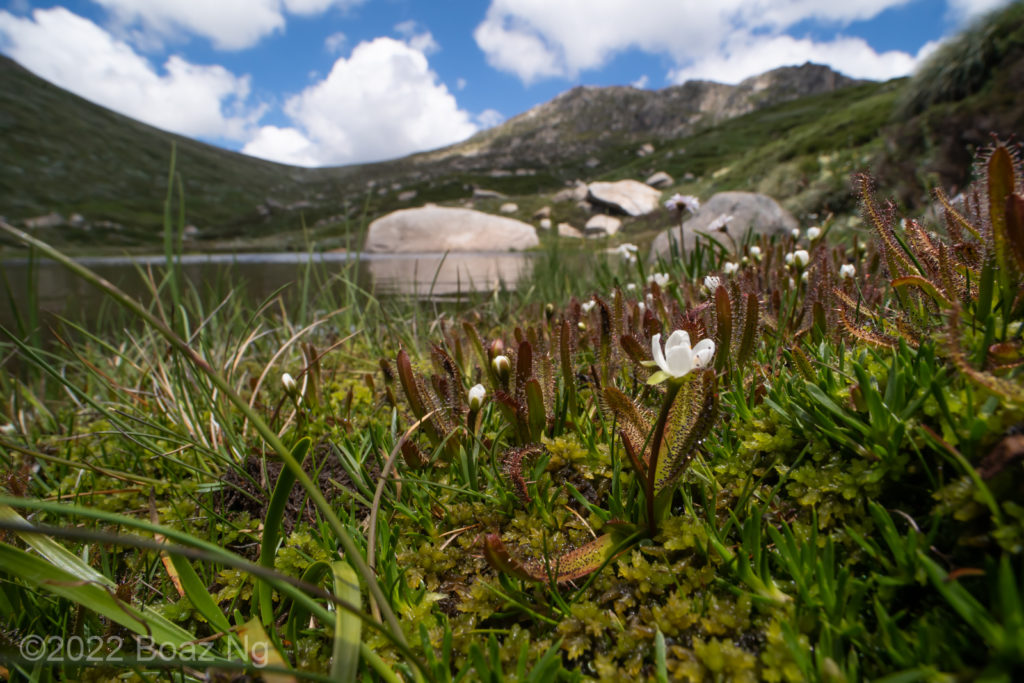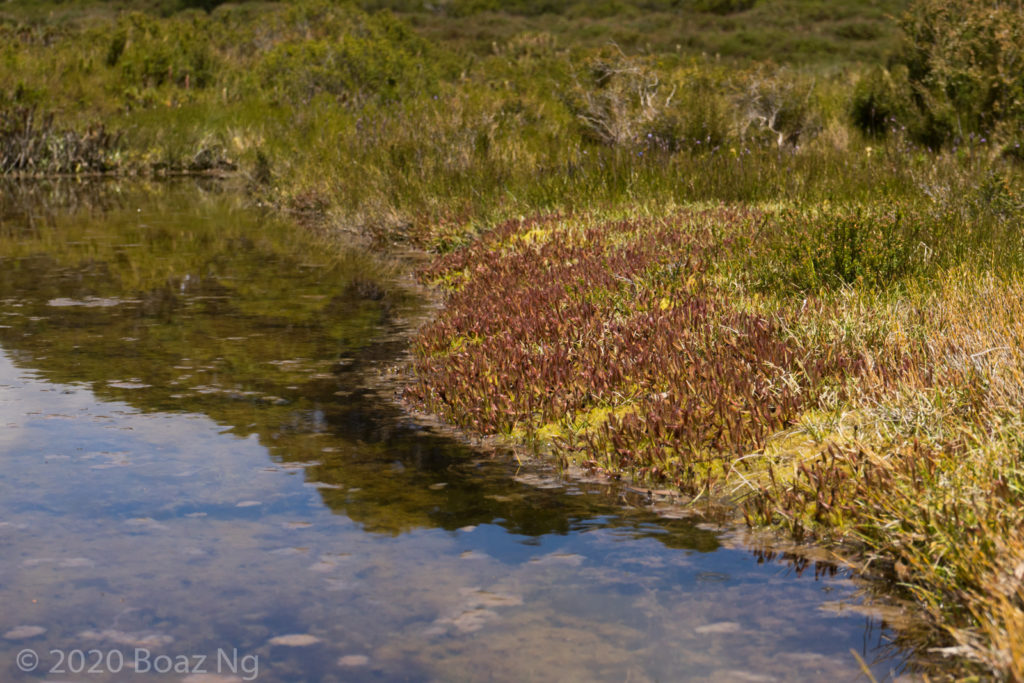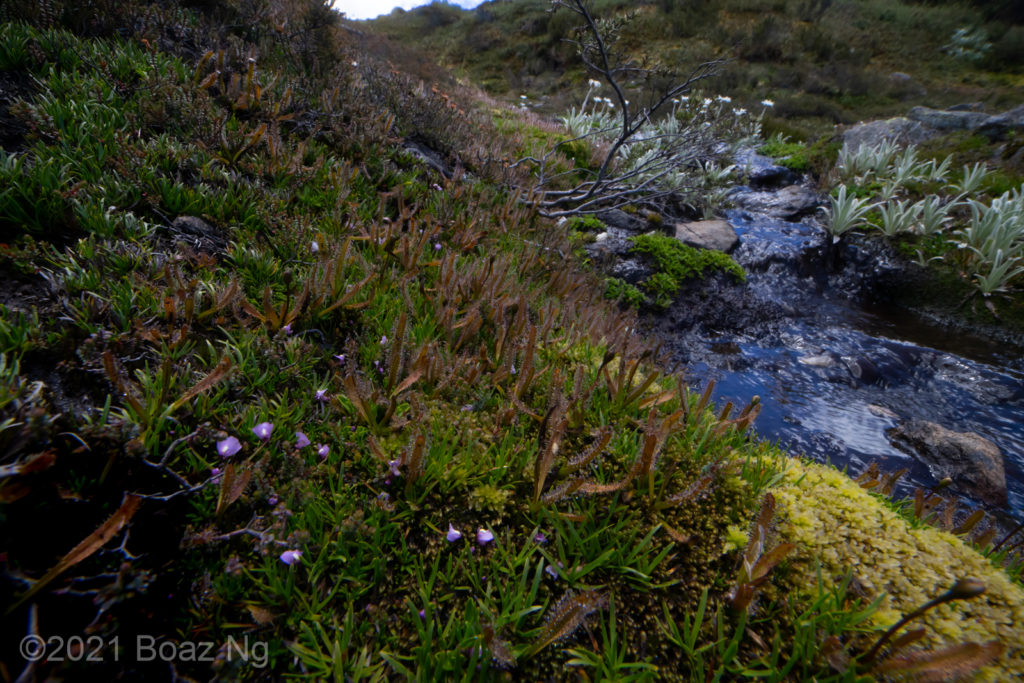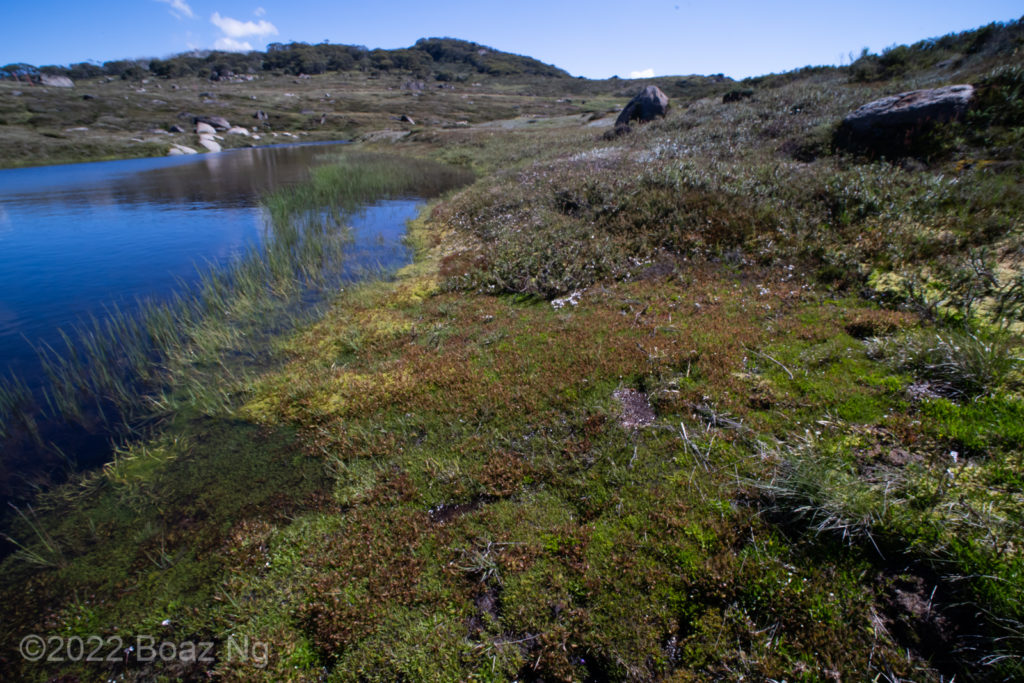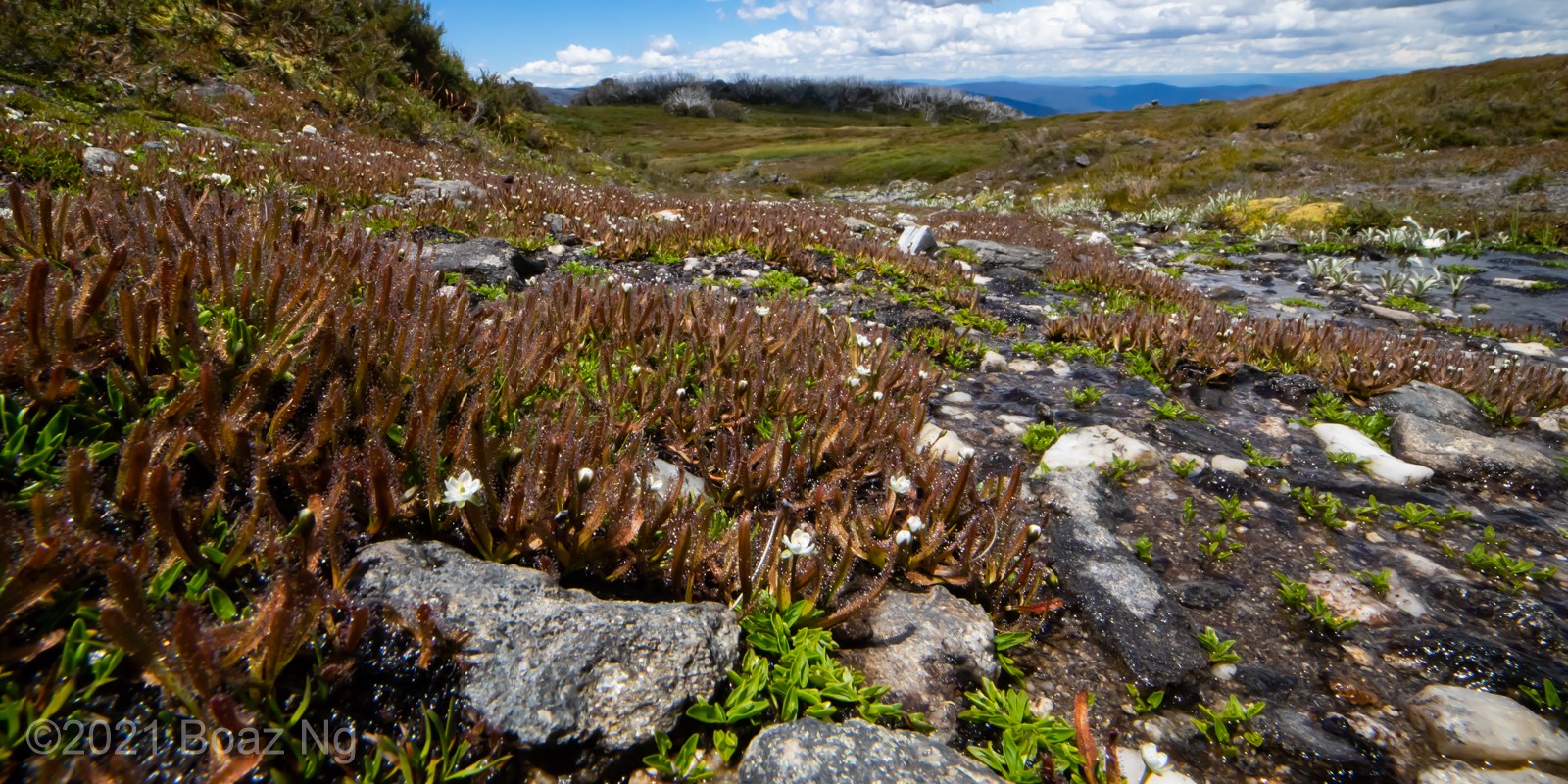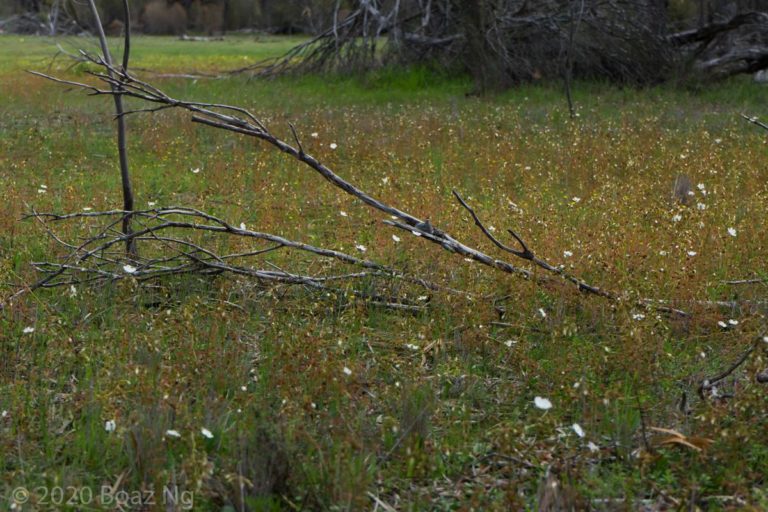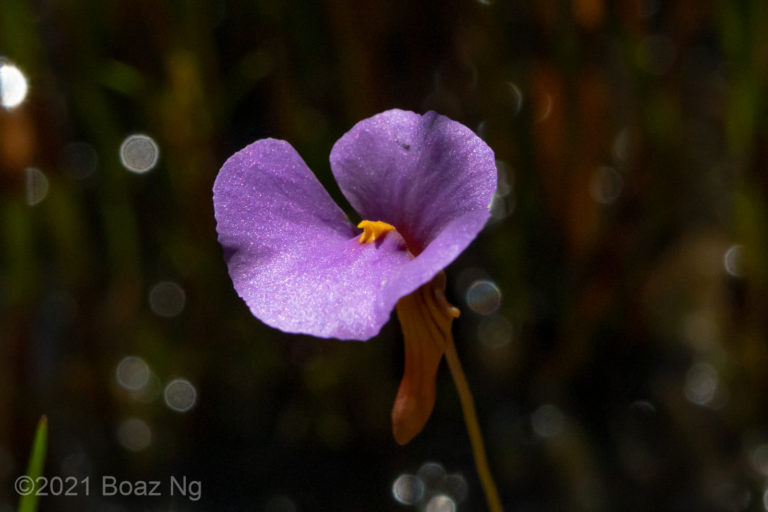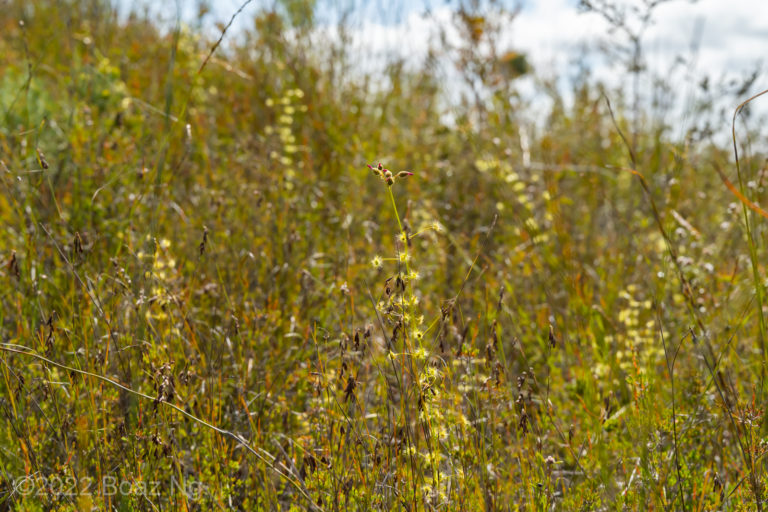Drosera arcturi is an alpine sundew native to the coldest parts of SE Australia and New Zealand. The species is named after its type location of ‘Mt Arthur, Tasmania’.
D. arcturi is highly adapted to grow in areas that receive winter snowfall. It grows a rosette of several elongated leaves that are thick to survive the frosts that can occur at any time of the year in the peaks. Single flowers are borne on a short and fleshy stem. The petals are white in colour. At the center of the flower is a set of off-white stigmas. The plants are at their largest when they flower in mid-summer, after which they gradually reduce into a horn-shaped hibernaculum for their winter dormancy. Plants reemerge in spring as the snow melts.
The species grows in the subalpine to alpine areas of the snowy mountains near the Victoria/NSW border, as well as throughout Tasmania and New Zealand. Its preferred niche seems to be sloped seepages although it is also frequently encountered at the edges of sphagnum-lined pools in subalpine bogs.
Drosera arcturi is closely related to D. murfetii and the two species grow sympatrically in the central Tasmanian highlands. D. arcturi is distinguished by its smaller size, greater number of leaves (D. murfetii typically has one or two active leaves), and white stigmas (D. murfetii has pink stigmas).
